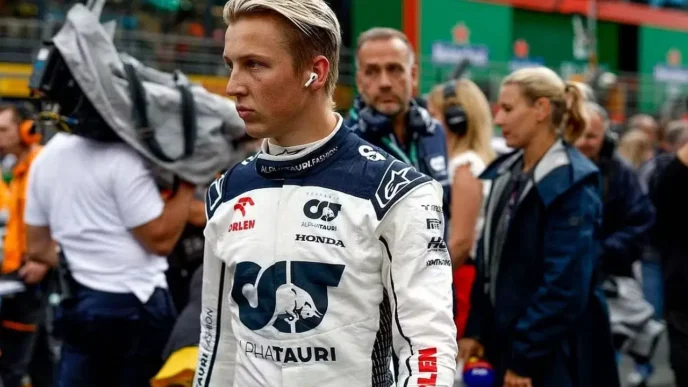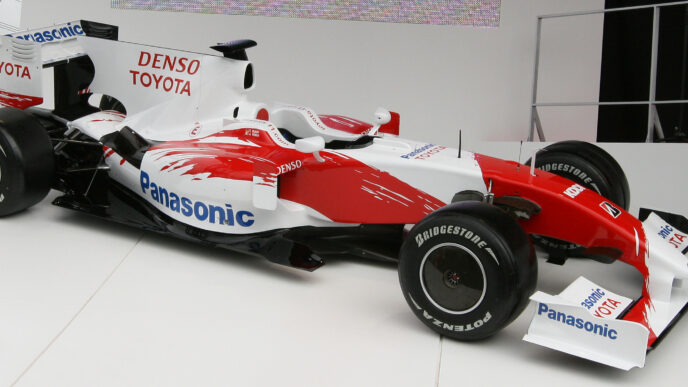No More “Fastest Lap” Bonus Point for Formula 1 in 2025
Formula 1 will see a significant change in its points system starting in 2025. The fastest lap bonus point, part of the championship since 2019, will be scrapped. This decision was made by the FIA’s World Motor Sport Council.
This change is one of several regulatory updates aimed at reshaping the sport over the next few seasons.
Fastest Lap Point Removal: Why It’s Happening
The fastest lap point was introduced to add strategy to races. Drivers who set the fastest lap and finished in the top 10 earned one extra point. This rule often led to late-race pit stops where drivers switched to fresh tires just to chase the bonus point.
From 2025 onward, the fastest lap point will be removed. While the FIA hasn’t given an explicit reason, it’s likely aimed at reducing these strategic manipulations and refocusing competition on consistent performance.
Impact on Race Strategy
Removing the fastest lap point will shift how teams approach their strategies. Previously, teams gambled with late pit stops for fresh tires to grab the single point. Without that incentive, teams will likely focus more on track position and consistency.
This change could also lead to fewer disruptions in the final laps. Instead of drivers chasing a fastest lap with low fuel and fresh tires, teams might prioritize their race positions earlier.
Increased Focus on Young Driver Participation
Along with scrapping the fastest lap point, another significant change for 2025 is increasing young driver participation in free practice. Teams will now be required to field young drivers in two practice sessions per season, doubling the current requirement.
This rule aims to give emerging talents more time in the car during race weekends. It’s part of Formula 1’s effort to develop new drivers and ensure a pipeline of fresh talent.
These practice sessions allow young drivers to adapt to F1’s technical demands while learning team operations.
Big Changes Coming in 2026: A Revamped Formula 1
Looking ahead to 2026, Formula 1 will undergo even more transformative changes. The FIA has laid out a framework for new technical, sporting, and financial regulations that will reshape the future of the sport. A key focus will be improving aerodynamics.
The 2026 regulations are designed to promote closer and more exciting racing. The FIA, working with F1 and the teams, aims to enhance aerodynamic efficiency while managing how air flows behind cars. This will make it easier for drivers to follow closely and overtake.
Power Unit and Energy Management Overhaul
The 2026 regulations will also introduce new power unit management rules. These updates will regulate how teams manage energy in their hybrid systems, ensuring more balanced and strategic power use during races.
In addition, Formula 1 will introduce adjustable aerodynamics with two modes: “straight-line mode” for reducing drag in high-speed sections and “cornering mode” for increasing downforce in tighter areas. This will make cars more adaptable to different track layouts and improve their race pace.
Expanded Pre-Season Testing
To help teams adjust to these changes, the 2026 season will include an expanded pre-season testing schedule. There will be three pre-season tests, each lasting three days, giving teams ample time to test new power units and aerodynamic setups.
This longer testing period is critical for understanding the new systems, ensuring teams are fully prepared when the season starts.
Financial Regulations Simplified for 2026
Financial regulations will also be simplified in 2026. The FIA is working on refining how exclusions and adjustments are calculated within the cost cap. Although the cost cap will remain at current levels, the framework for managing inflation and cost pressures aims to be improved.
The goal is to ensure that all teams can operate on a level playing field. These changes will reduce financial disparities that have historically shaped competition in Formula 1.
2026: A New Era for Formula 1
The 2026 changes signal a new era for Formula 1. The goal is to modernize the sport while ensuring it remains competitive, exciting, and financially sustainable. Updates to power unit management and aerodynamics will be developed with close collaboration between the FIA, F1, and the teams.
At the core of these updates is the desire to keep Formula 1 at the forefront of both sport and automotive technology. New regulations around energy management and adjustable aerodynamics are pushing the cars to be more adaptable and efficient while prioritizing on-track action.
FIA’s Long-Term Vision for Formula 1
FIA President Mohammed Ben Sulayem emphasized the importance of keeping Formula 1 financially stable and relevant to the automotive industry. Advanced technologies such as adjustable aerodynamics and refined power units aim to align F1 with innovations in road car development.
Simplified financial regulations will make the sport more accessible, ensuring smaller teams can compete with the biggest names. Consistency across the grid will lead to tighter competition.
As the FIA works with Formula 1 and the teams to finalize these regulations, more details will emerge about the technical aspects of the 2026 cars. With the fastest lap point already set for removal in 2025, Formula 1 is moving toward a more streamlined and competitive future.














